Answered step by step
Verified Expert Solution
Question
1 Approved Answer
What is the approximate size of a neutron star? (A) the size of a city B the size of the moon the size of
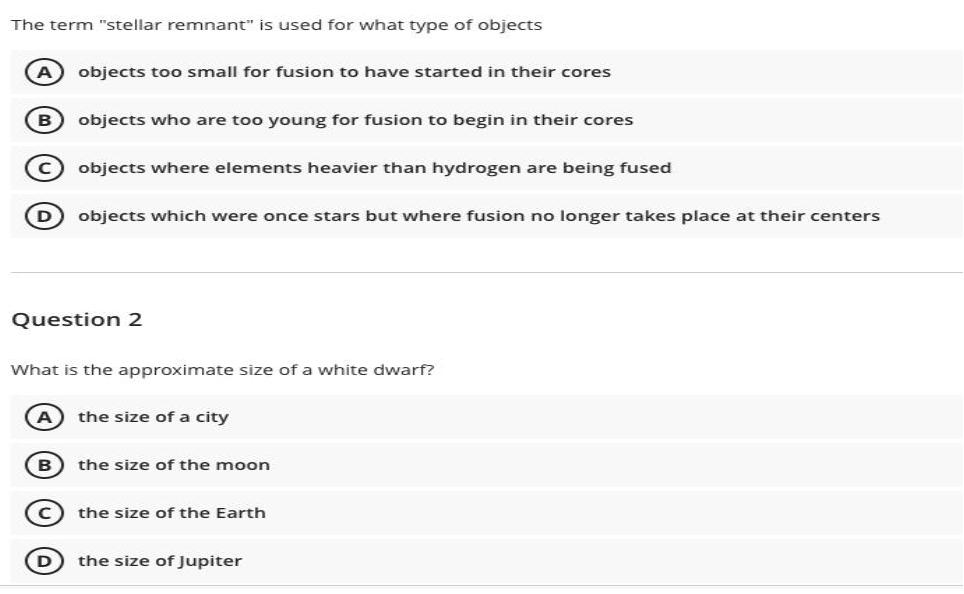


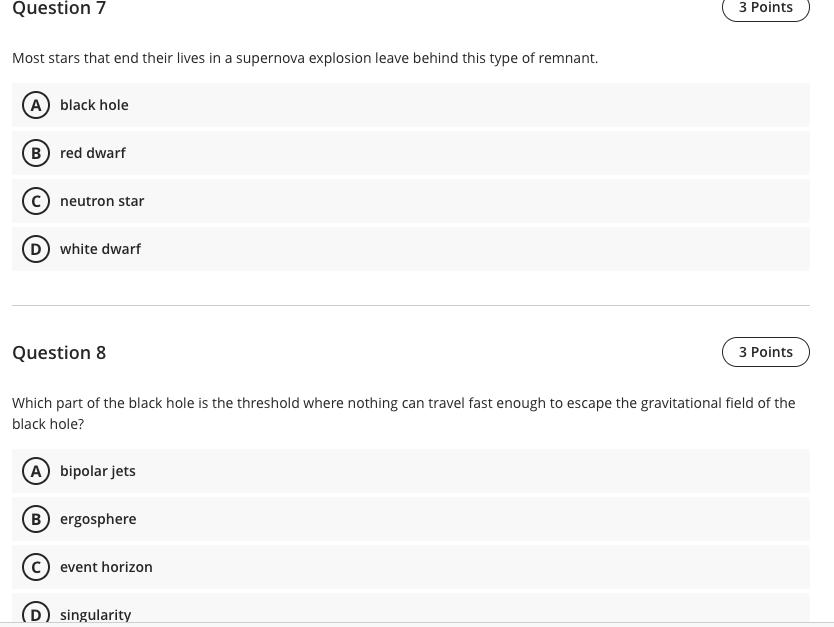
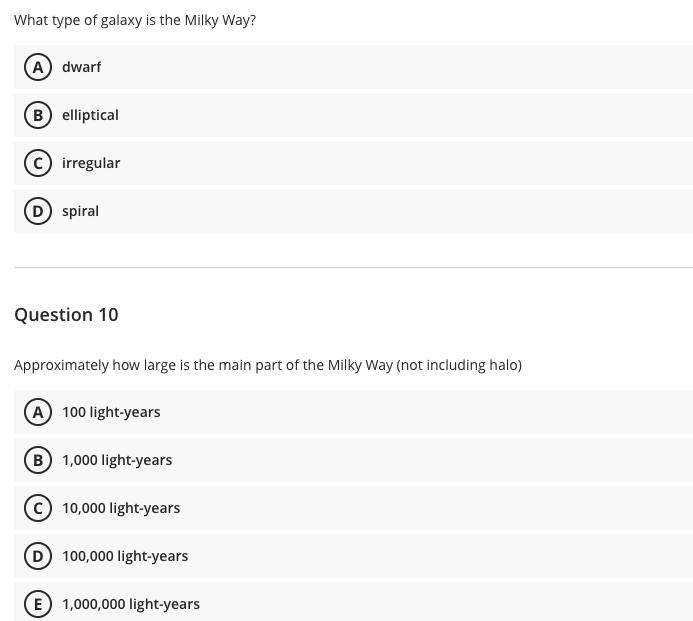
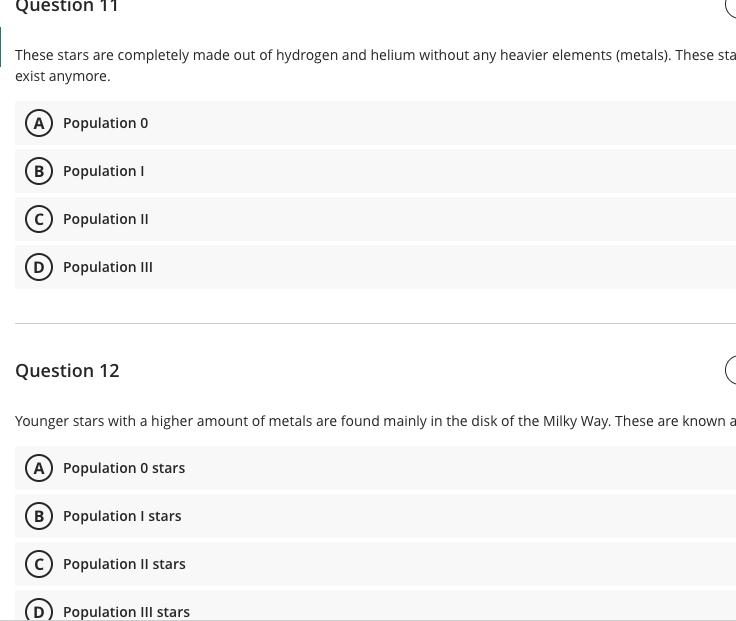

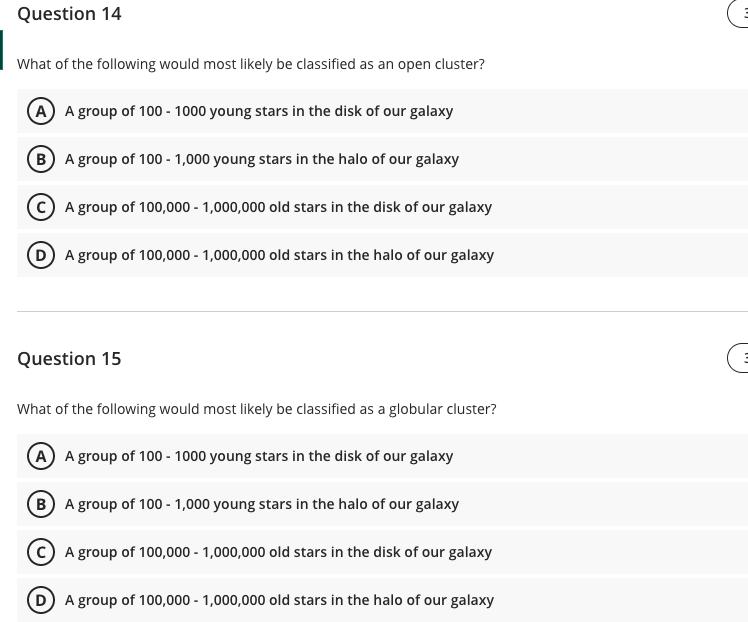




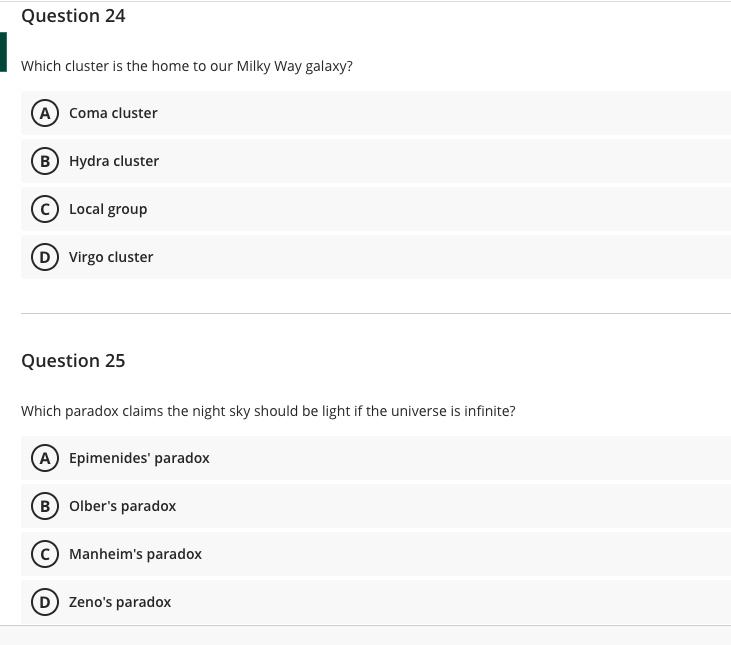
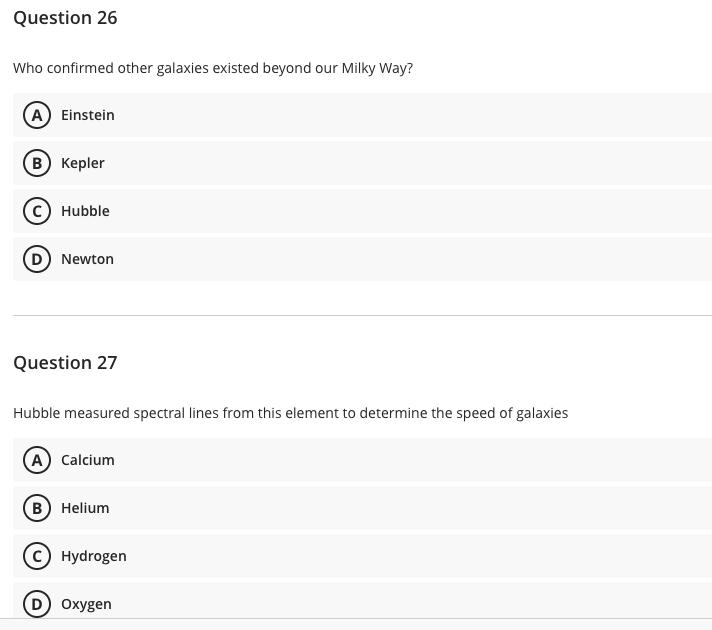

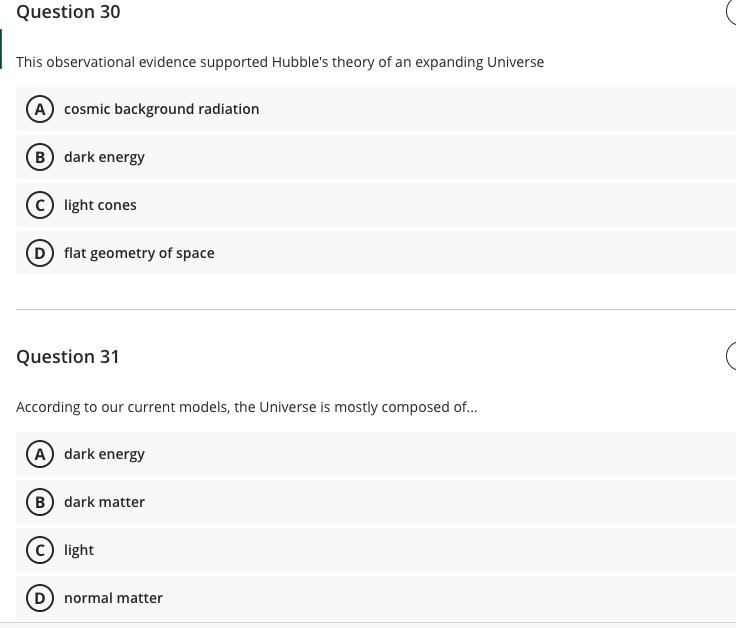
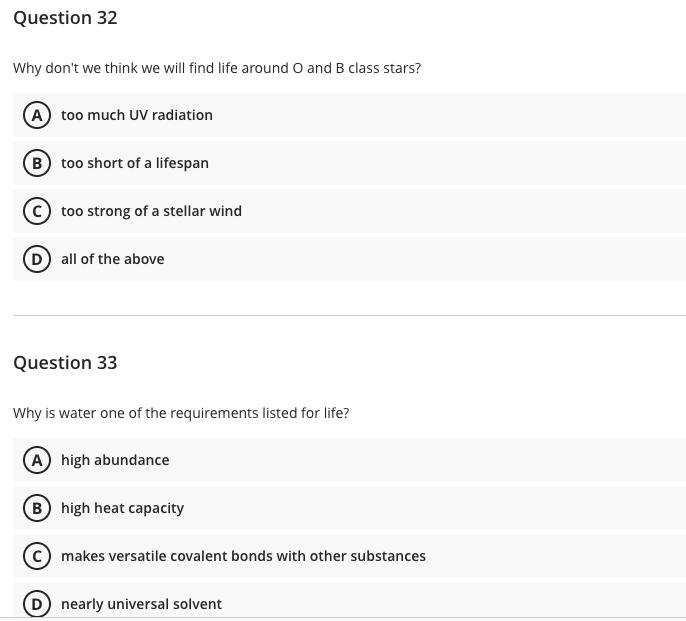
What is the approximate size of a neutron star? (A) the size of a city B the size of the moon the size of the Earth the size of Jupiter E) the size of the Sun Question 4 3 Points What type of supernova results when a white dwarf explodes after removing mass from a giant star in a binary system? A type la B) type Ib type 1c D) type I| What is a pulsar? A) a spinning main-sequence star (B a spinning black hole c) a spinning neutron star D a spinning white dwarf Question 6 What type of stellar remnant will our Sun become? (A) black hole B) red dwarf neutron star D pulsar E white dwarf Question 7 3 Points Most stars that end their lives in a supernova explosion leave behind this type of remnant. A black hole B red dwarf neutron star D white dwarf Question 8 3 Points Which part of the black hole is the threshold where nothing can travel fast enough to escape the gravitational field of the black hole? A bipolar jets B ergosphere C) event horizon singularity What type of galaxy is the Milky Way? A dwarf (B elliptical C irregular D spiral Question 10 Approximately how large is the main part of the Milky Way (not including halo) (A 100 light-years (B 1,000 light-years 10,000 light-years D 100,000 light-years E 1,000,000 light-years Question 12 3 Points Younger stars with a higher amount of metals are found mainly in the disk of the Milky Way. These are known as. A Population 0 stars (B Population I stars Population Il stars D Population III stars Question 13 3 Points Older stars with very little metals are found mostly in the nuclear bulge and halo of the Milky Way. These are known as. A Population 0 stars B Population I stars Population II stars D Population IIl stars Question 14 What of the following would most likely be classified as an open cluster? A A group of 100 - 1000 young stars in the disk of our galaxy BA group of 100 - 1,000 young stars in the halo of our galaxy A group of 100,000 - 1,000,000 old stars in the disk of our galaxy A group of 100,000 - 1,000,000 old stars in the halo of our galaxy Question 15 What of the following would most likely be classified as a globular cluster? (A A group of 100 - 1000 young stars in the disk of our galaxy (B A group of 100 - 1,000 young stars in the halo of our galaxy A group of 100,000 - 1,000,000 old stars in the disk of our galaxy A group of 100,000 - 1,000,000 old stars in the halo of our galaxy Question 16 Most of the mass of our galaxy is thought to be composed of.. (A) dark matter (B) interstellar gas and dust stars D) stellar remnants Question 17 What is Sagittarius A* (A a massive molecular cloud where new stars are forming B a small dwarf galaxy orbiting the Milky Way c) a strong radio source from the central black hole in our galaxy (D the most massive star in the Milky Way Question 18 How did Hubble measure the distance to other galaxies? A Cephid variable stars (B) Parallax Proper Motion Type la supernovae Question 19 Which of the following is NOT a classification for galaxies as developed by Edwin Hubble? (A) elliptical B irregular parabolic spiral Question 20 Which type of galaxy is the most common? A elliptical B irregular spiral Question 21 What are "active galaxies"? A galaxies with a magnetic field B galaxies with star formation galaxies with strong radio emissions from their nuclei rotating galaxies Question 24 Which cluster is the home to our Milky Way galaxy? A Coma cluster B Hydra cluster Local group D Virgo cluster Question 25 Which paradox claims the night sky should be light if the universe is infinite? A Epimenides' paradox B Olber's paradox Manheim's paradox (D Zeno's paradox Question 28 3 Points Which theory did Hubble develop based on his observation of galaxies? A Big Bang Theory B Inflation Theory Steady-State Theory String Theory Question 29 3 Points This theory stated that the Universe went through a rapid expansion when the Universe was the size of an atom and then expanded at a slower place immediately after A Big Bang Theory B Inflation Theory Steady-State Theory String Theory Question 30 This observational evidence supported Hubble's theory of an expanding Universe (A) cosmic background radiation B dark energy light cones D flat geometry of space Question 31 According to our current models, the Universe is mostly composed of. A dark energy B dark matter light (D) normal matter Question 32 Why don't we think we will find life around O and B class stars? A too much UV radiation B too short of a lifespan (c too strong of a stellar wind (D all of the above Question 33 Why is water one of the requirements listed for life? A high abundance B high heat capacity makes versatile covalent bonds with other substances nearly universal solvent
Step by Step Solution
★★★★★
3.34 Rating (157 Votes )
There are 3 Steps involved in it
Step: 1
Answer 1C 2C 3E 4A 5C ...
Get Instant Access to Expert-Tailored Solutions
See step-by-step solutions with expert insights and AI powered tools for academic success
Step: 2

Step: 3

Ace Your Homework with AI
Get the answers you need in no time with our AI-driven, step-by-step assistance
Get Started


